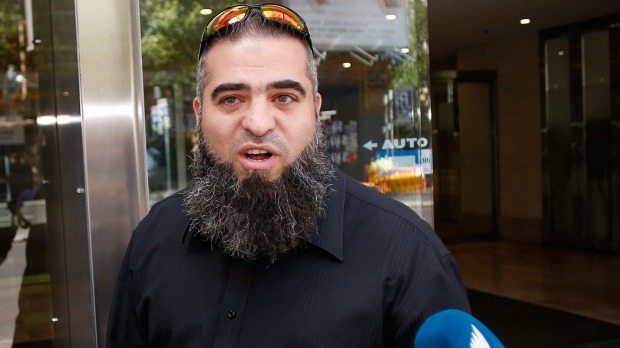
Islamic State Spurs Increased Jihadist Activity in Australia
Publication: Terrorism Monitor Volume: 13 Issue: 4
By:

The ongoing conflicts in Syria and Iraq have had a dramatic effect on the level of jihadist activity in Australia, leading to a rapid increase in the operational tempo of Australia’s counter-terrorism agencies. Their work has been given added urgency in recent months by growing evidence that local networks supporting jihadist groups like Jabhat al-Nusra and the Islamic State are no longer only sending funds and fighters overseas, but are also plotting attacks within Australia. This article describes the shift, showing how Australia has responded to this developing threat, thereby providing an example of how jihadist support networks in other countries may also evolve in coming years.
Background
From the late 1990s until the Syrian conflict internationalized in 2012, Australia had experienced a significant but generally low level of jihadist activity. For instance, unsuccessful terror plots occurred in 2000, 2003, 2005 and 2009, and some Australians (numbering in the low dozens) travelled to join jihadist groups in Afghanistan, Pakistan, Lebanon, Somalia and Yemen. [1] However, from 2012, the Syrian conflict prompted the largest ever mobilization of aspiring jihadists. In early 2015, the Australian Security Intelligence Organization (ASIO) estimated that around 90 Australians were currently fighting for jihadist groups in Syria and Iraq, up to 30 have returned and that over 20 have died in the conflict (ABC, January 25; Herald Sun, January 15; Sydney Morning Herald, December 11, 2014).
In response, the security agencies have been trying to disrupt the local support networks for Jabhat al-Nusra and Islamic State. The main focus of these has been Sydney, in the state of New South Wales (NSW), although raids against suspected networks have also occurred in Melbourne and Brisbane. Australian counter-terrorism policing work has been led by the Joint Counter Terrorism Team (JCTT), which in New South Wales comprises representatives from the Australian Federal Police (AFP), the NSW Police Force, the NSW Crime Commission and ASIO. A brief summary of JCTT’s recent operations in Sydney illustrates the key recent developments within Australian jihadism.
Operation Rathlin
In 2013, the JCTT launched Operation Rathlin, leading to the arrests of two men in December 2013. [2] These were Hamdi al-Qudsi, a 39-year-old man who had participated in protests against the film “The Innocence of Muslims” in 2012, and Amin Iman Mohamed, a 23-year-old New Zealand citizen born in Somalia, who are soon to stand trial. The prosecution alleges that al-Qudsi had recruited at least six fighters and facilitated their travel to Syria and that Mohamed had been recruited by al-Qudsi and was himself preparing to join the war (The Australian, December 4, 2014). The men’s network extended to the Middle East, with al-Qudsi allegedly conspiring with former Sydney man Muhammad Ali Baryalei, who assisted the aspiring fighters once they arrived in Turkey.
Muhammad Ali Baryalei, who is of Afghan heritage and who arrived in Australia as a child, is believed to have been the most senior Australian member of the Islamic State (ABC, September 9, 2014). The authorities believe Baryalei recruited approximately 30 Australians, first for Jabhat al-Nusra and then for the Islamic State, before his death in Syria in October 2014 (Sydney Morning Herald, October 29, 2014). Baryalei had previously been a security guard for a Sydney nightclub before embracing a strict interpretation of Islam (ABC, September 9, 2014). In April 2013, Baryalei left for Syria, joined Jabhat al-Nusra and facilitated the arrival of several Australian recruits, often former friends from his time in a preaching movement called Street Dawah (The Australian, September 6, 2014).
However, around June 2013, he shifted his allegiance, abandoning Jabhat al-Nusra and joining the Islamic State (ABC, September 25, 2014). This occurred at a time of intense jihadist infighting, which other Australians also became involved in; during the violence, Islamic State members killed one of Baryalei’s Jabhat al-Nusra Australian recruits, a convert called Tyler Casey who had been heavily influenced by the teachings of U.S.-born radical preacher Anwar al-Awlaki. Casey, along with his Australian Muslim-born wife, was killed as part of the group’s power struggle against al-Nusra in Aleppo in Syria in January 2014 (ABC, September 9, 2014).
Operation Appleby
Al-Qudsi’s arrest in December 2013 did not end Islamic State recruitment from Sydney, however. A small group of people in contact with al-Qudsi continued to coordinate with Baryalei to recruit fighters and send money to the Islamic State. The suspected network involved roughly 17 people and had a loose hierarchical structure, with four men in leadership positions. Security agencies monitored the network and confiscated the passports of suspected recruits. In May 2014, the Joint Counter Terrorism team launched a large-scale investigation into the group, termed Operation Appleby (The Australian, September 19, 2014).
In early September 2014, however, the threat posed by this legacy network changed. The authorities believe Baryalei had now asked the network to prepare for an attack in Australia, leading them to discuss vague but ambitious plans such as a car bombing. However, in mid-September, Baryalei allegedly ordered the men to carry out a much simpler attack, as quickly as they could. The plan was to kidnap and murder a randomly chosen non-Muslim member of the public, film their killing and place the video on social media (The Australian, September 19, 2014).
The JCTT, judging that they needed to act fast, launched the largest series of counter-terrorism raids in Australia’s history. On September 18, more than 800 federal and state police officers raided houses across Brisbane and Sydney, arresting 16 people (The Australian, September 19, 2014). Following the raids, 22-year-old Omarjan Azari was charged with conspiring “with Muhammad Baryalei and others to do acts in preparation for, or planning, a terrorist act” (The Australian, September 19, 2014). He is currently facing trial.
The police faced media criticism that the extensive raids had resulted in only one person being charged with a terrorism offence. The Australian Federal Police stated that the raids were:
In other words, the police assessed that the threat was so acute that it should be disrupted by the massive raids, even if they did not have the evidence to prosecute most of the suspects.
Ongoing Disruption of Plots
Operation Appleby has continued since then, with the JCTT launching further raids against suspected members of the network, and laying charges where possible, in order to disrupt and deter a potential attack. On October 17, 2014, a Brisbane man of Albanian origin named Agim Kruezi, who was already being charged with intending to travel to fight in Syria under a separate terrorism investigation (Operation Bolton, which involved planting an undercover officer inside a Brisbane-based network), was charged with a new offence thanks to evidence gained in the Appleby raids (Brisbane Times, January 23). Police allege that Kruezi was linked to the Sydney network and had transported a firearm and acquired equipment for a terrorist plot (ABC, October 17, 2014). On December 15, 2014, 24-year-old Ali al-Talebi was arrested and accused of sending $11,000 ($15,000 AUD) to the Islamic State (The Australian, December 18, 2014). [4] On December 23, 2014, Sulayman Khalid, a 20-year-old who was born in Sydney, was arrested and charged with “possessing documents designed to clearly facilitate an attack” (Sydney Morning Herald, December 26, 2014).
Several other suspected members of the network have also been charged in recent months, mainly with weapons and drug offences. An Islamic State member from Melbourne is believed to have taken Baryalei’s place in the movement, and to have communicated to his followers in Australia to continue trying to attack local targets (The Australian, February 7). To date, over ten people have been charged as a result of Operation Appleby, which is still ongoing. [5]
Conclusion
Since 2012, Australian security agencies have been tackling local networks providing support for Jabhat al-Nusra and the Islamic State’s operations abroad. Today, however, their attention is focused on preventing potential terrorist plots arising from members of these networks. The bulk of this activity has occurred in Sydney, though much about these events is unclear, as many of the trials have not yet taken place and Operation Appleby continues, with fresh arrests occurring regularly. These developments, however, show that local support networks for groups like the Islamic State can rapidly evolve to pose a direct threat at home.
Indeed, the events share similarities with past jihadist activity in Australia, which often saw domestic terrorist plots arise from networks that had initially developed to support armed movements overseas. For instance, a plot in 2000 to attack the Israeli Embassy developed out of southeast Asian group Jemaah Islamiyah’s Australian-based support network after it was coopted by al-Qaeda. [6] Similarly, a 2009 plot to attack an army base emerged from a Melbourne-based support network for the Somali jihadist movement al-Shabaab. [7] However, the broad appeal of the conflicts in Syria and Iraq means authorities have a greater range of local support activity, and potential plots, to monitor. At the same time, these events indicate that well-developed police understanding of support networks can make such plots easier to thwart.
Andrew Zammit is a researcher at Monash University’s Global Terrorism Research Centre.
Notes
1. Andrew Zammit, “Explaining a turning point in Australian jihadism,” Studies in Conflict & Terrorism, Volume 36, Issue 9, 2013, pp. 739-755.
2. Australian Federal Police, “Joint agency operation charges two men with foreign incursion offences,” December 3, 2013, https://www.afp.gov.au/media-centre/news/afp/2013/december/media-release-joint-agency-operation-charges-two-men-with-foreign-incursion-offences.
3. “Parliamentary Joint Committee on Intelligence and Security – Counter-Terrorism Legislation Amendment Bill (No.1) 2014”, (Thursday, 13 November 2014)
4. Australian Federal Police, “Further charges in joint counter terrorism operation,” December 18, 2014, https://www.afp.gov.au/media-centre/news/afp/2014/december/media-release-further-charges-in-joint-counter-terrorism-operation.
5. Australian Federal Police, “Two men charged in ongoing joint counter terrorism operation,” December 24, 2014, https://www.afp.gov.au/media-centre/news/afp/2014/december/media-release-two-men-charged-in-ongoing-joint-counter-terrorism-operation.
6. See: Supreme Court of Western Australia – Court of Appeal, “R v Roche” (2005), https://www.austlii.edu.au/cgi-bin/sinodisp/au/cases/wa/WASCA/2005/4.html.
7. See: Supreme Court of Western Australia – Court of Appeal, “R v Fattal & Ors” (December 16, 2011), https://www.austlii.edu.au/cgi-bin/sinodisp/au/cases/vic/VSC/2011/681.html.





